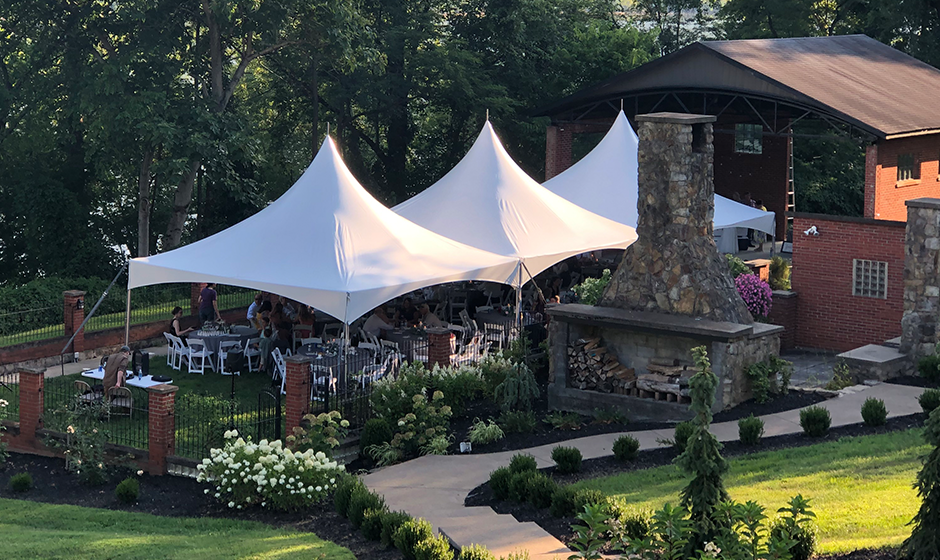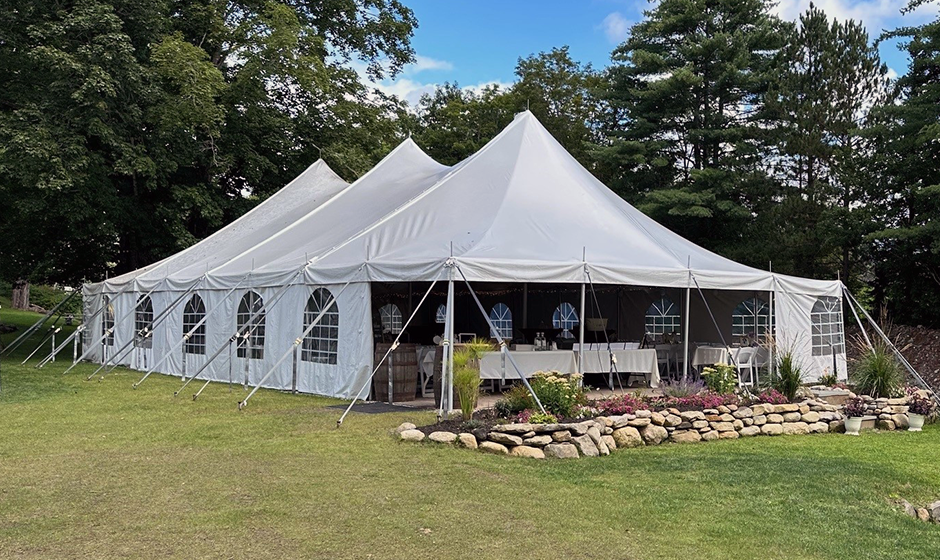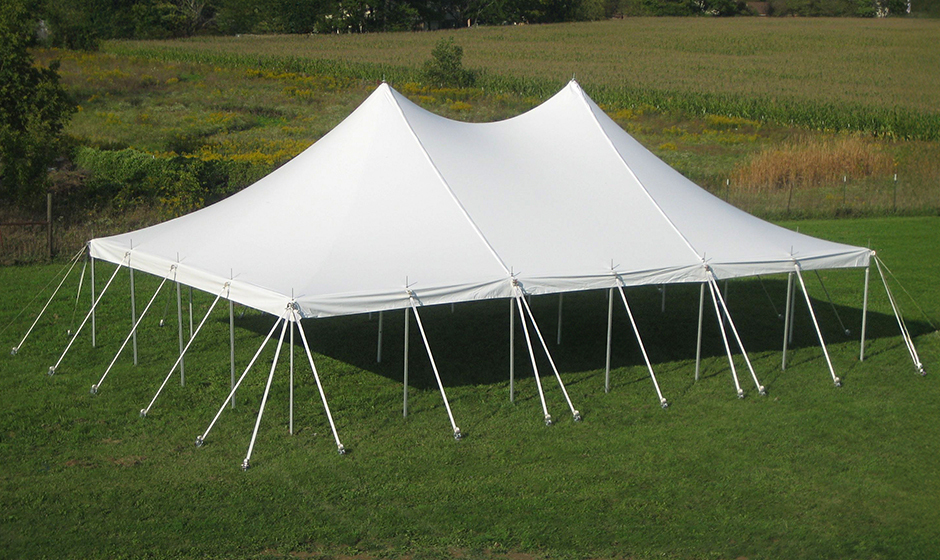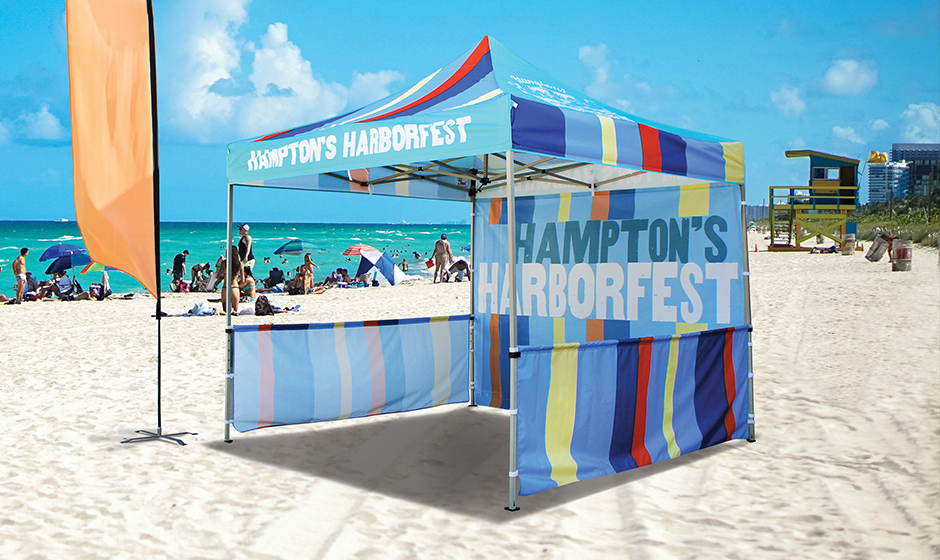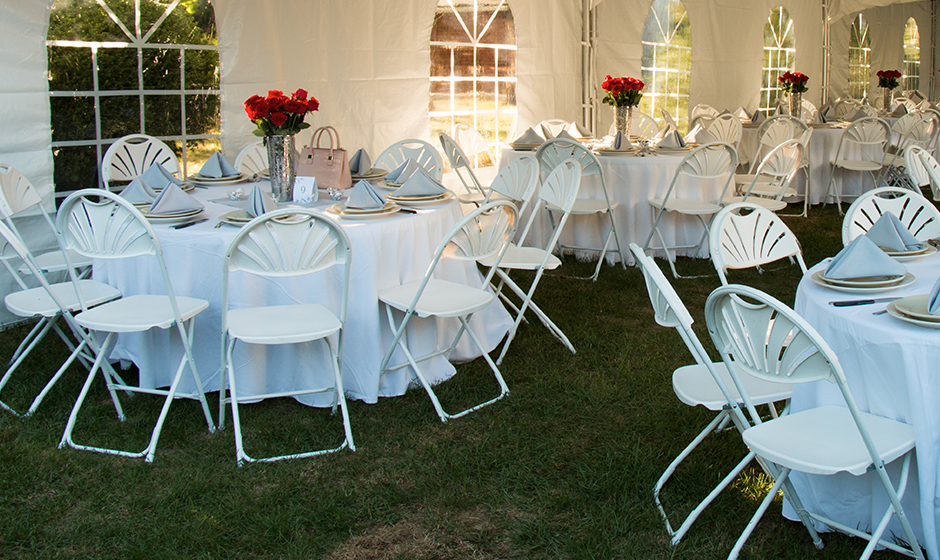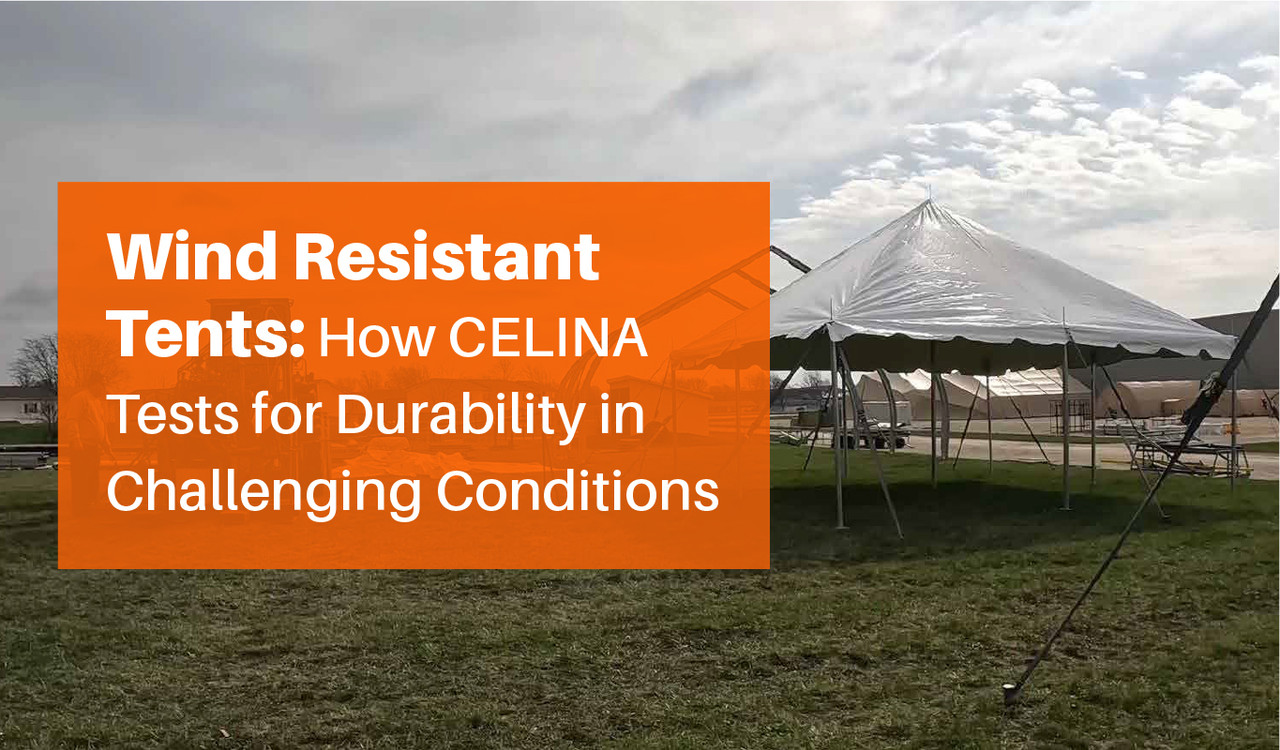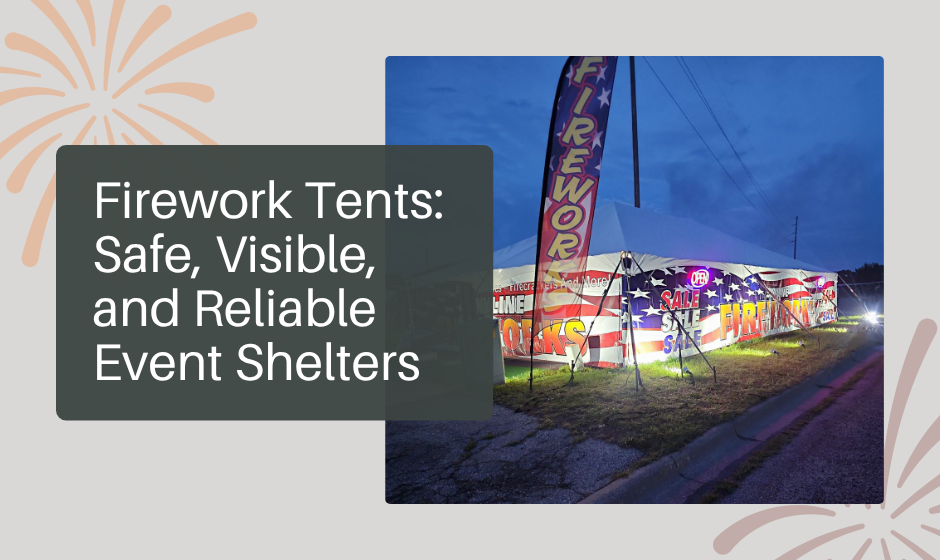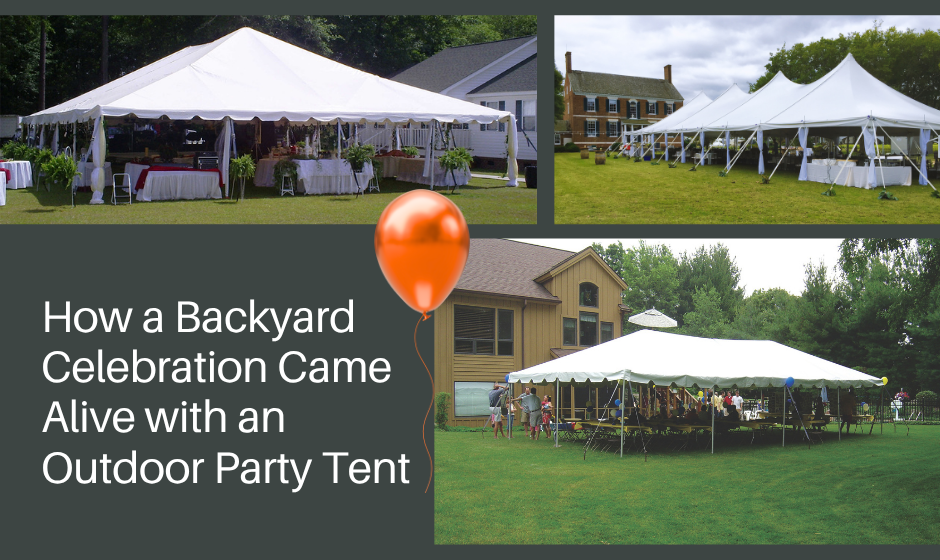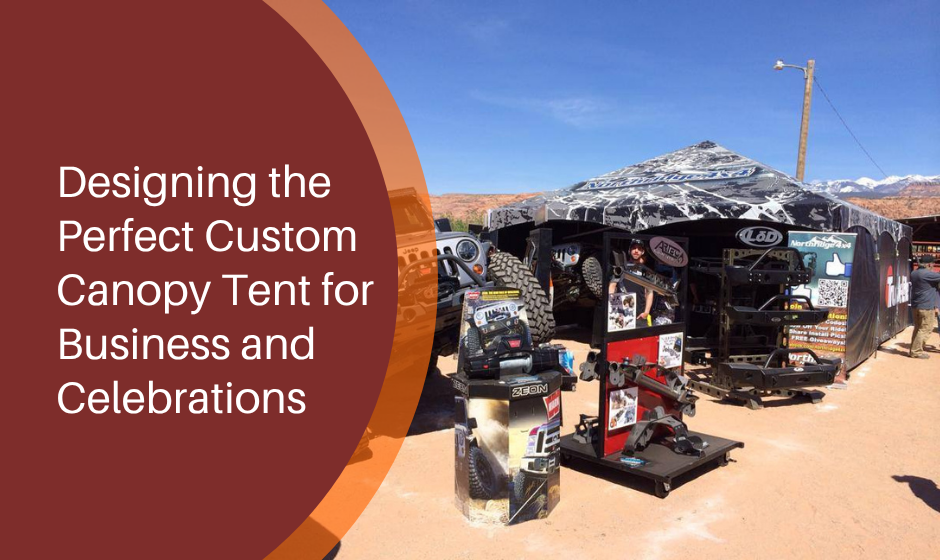Wind Resistant Tents: How CELINA Tests for Durability in Challenging Conditions
As spring winds sweep across the United States, many event planners and tent installers are raising important questions about how tents hold up in windy conditions. At CELINA, we recognize the critical role wind resistance plays in ensuring both safety and durability. That’s why we rigorously test our tents under real-world conditions to confirm their strength and stability against strong gusts and unpredictable weather.
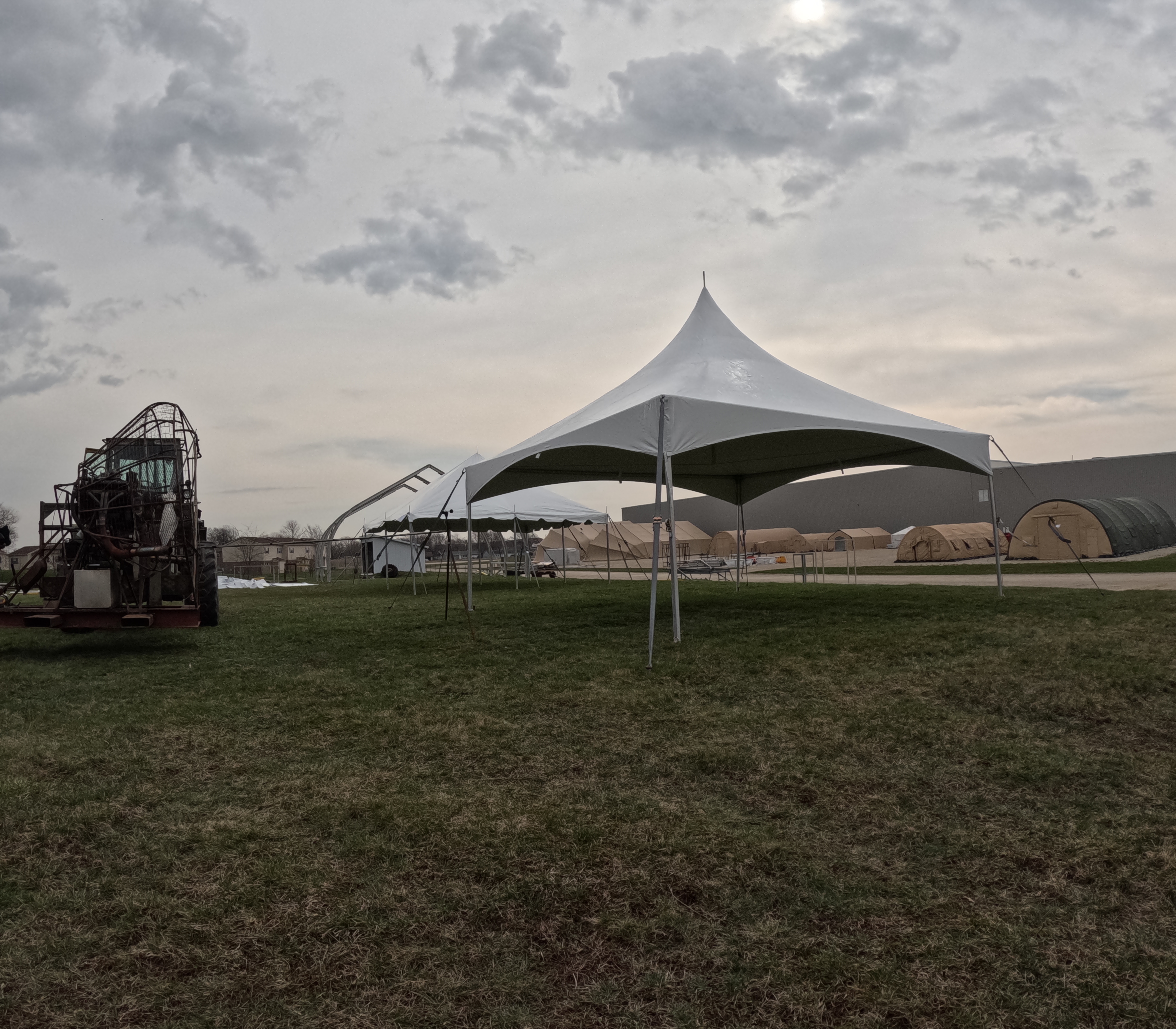
Understanding Wind Challenges for Tents
Tents, by design, are vulnerable to wind due to their large fabric canopies and open frameworks. Without proper anchoring, a tent can behave much like a kite, catching wind and becoming unstable. However, when installed correctly using the recommended staking and anchoring methods, a quality tent can withstand standard wind conditions with ease.
Every CELINA tent includes staking guidelines in its installation manual, outlining the minimum staking requirements for safe use. In areas with high winds, additional staking is often necessary, particularly in locations where ground composition—such as sand, gravel, or water-saturated soil—offers less holding power. Understanding these factors is essential to maintaining a stable structure.
How CELINA Tests Wind Resistance
At CELINA, we go beyond basic industry standards by conducting extensive wind resistance tests on our tents. These tests simulate various wind conditions to determine how our structures perform under different stress levels. Our evaluation process includes:
- Wind Whip Testing: Evaluates fabric performance and resistance to wind-induced movement, ensuring long-term durability.
- Controlled Wind Load Testing: Exposes tents to high-speed wind to measure stability and anchoring effectiveness.
- Real-World Installations: Tests tents in diverse environments to analyze real-life performance under various weather conditions.
- Sidewall Pressure Analysis: Assesses structural impact when sidewalls are attached, ensuring safety and balance under increased wind load.
Best Practices for Wind Management
In addition to rigorous testing, proper installation and maintenance are vital for maximizing a tent’s wind resistance. Keep these best practices in mind:
- Secure Anchoring: Use heavy-duty stakes or appropriate weights (sandbags, water barrels, or concrete blocks) depending on the surface.
- Proper Tensioning: Ensure the tent fabric is tightly stretched to prevent flapping and potential tearing, while keeping poles aligned and secure.
- Use of Sidewalls: Sidewalls can improve wind resistance by reducing airflow through the structure—opt for reinforced materials with strong fastenings.
- Regular Inspections: Check all anchors and connections regularly, especially during multi-day events or if wind speeds increase.
- Emergency Preparedness: Have a plan for unexpected high winds, including evacuation procedures and additional anchors or weights on standby.
What to Do in Severe Weather Conditions
In cases of severe storms or extreme wind events, safety should always be the top priority. If strong winds or lightning are forecasted, all event attendees should evacuate to a permanent structure. For maximum precaution:
- Remove Tent Fabric: If time allows, remove the fabric top and sidewalls to prevent damage or uplift.
- Ensure Proper Anchoring: Even with additional staking, a tent should never be used as shelter during dangerous weather.
- Monitor Weather Forecasts: Stay informed of changing weather to make timely decisions about setup or takedown.
Trust CELINA for Reliable, Wind-Resistant Tents
CELINA takes tent safety seriously, which is why we invest in rigorous testing to ensure the highest reliability. Whether hosting an event in a breezy open field or preparing for unpredictable spring storms, our tested and proven tents provide the security you need.
By combining CELINA’s engineering expertise with these best practices, you can ensure your tent installations are resilient against high winds—delivering safety and peace of mind for every event.
For more information on tent installations, staking best practices, and wind resistance strategies, visit our CELINA Product Support Center or reach out to our team:
- ? (844) 801-9588
- ✉️ Sales@GetTent.com





